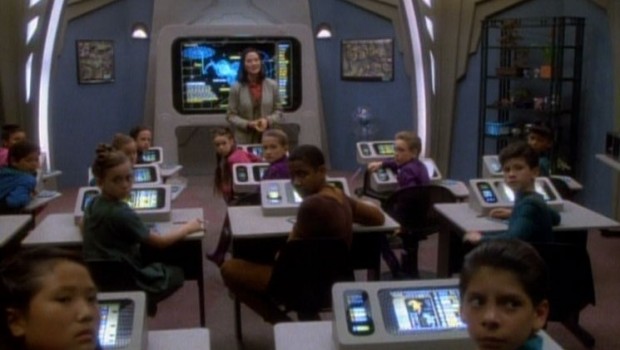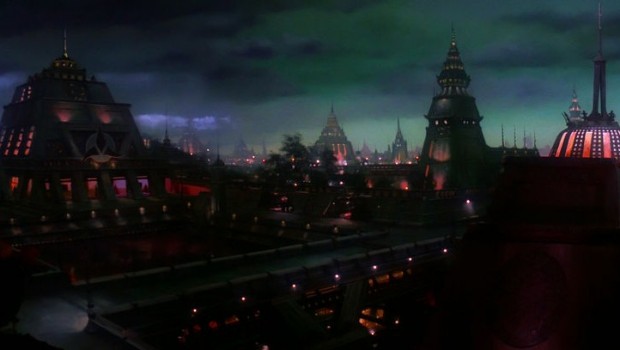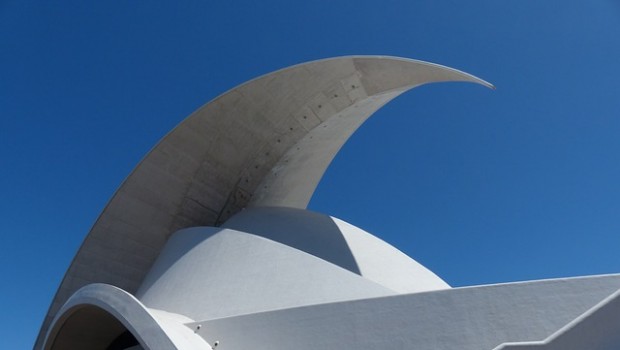
Bajor thrives three decades after Dominion War
ASHALLA – Bajor’s capital city is bustling with activity as the planet enjoys an era of unprecedented prosperity. Once a symbol of resilience during the Dominion War, Bajor has become a hub for art, commerce, and innovation.
When the Emissary Benjamin Sisko, then a Starfleet captain, prevented Bajor from joining the Federation, many across the galaxy thought he had harmed them. Yet, just a few short months later, he was proven correct when the Cardassians joined the Dominion—but Bajor was spared, thanks to the non-aggression pact they signed with the Founders. After decades under harsh Cardassian rule, war was the last thing they needed.
It has been three decades since the war with the Dominion, and Bajor thrives as a member of the United Federation of Planets. As the crossroads to the Gamma Quadrant, they have drawn talent from around the galaxy. From artists to commerce, Bajorans from all walks of life are now known for their innovative ideas.
The D’jarras: A System of the Past
Yet, this wasn’t always the case. Before the occupation by the Cardassians, Bajor used a caste system called the D’jarras. This system was based on family lineage, resulting in certain families holding higher ranks in society than others. A few examples of these roles include the Ih’valla, or artists; the Mi’tino, known as low-ranking merchants and landowners; and the Ke’lora, who were labourers and lawmen.
During the occupation, in the late 2340s, Vedek Opaka first advocated for the D’jarras’ abolition but was expelled from the Vedek Assembly over it by Kai Arin. The Kai later saw her point of view but was killed by his Cardassian minder to prevent him from enacting it. It wasn’t long before the Vedek’s plan was passed by the Assembly, allowing all Bajorans to become soldiers and members of the resistance.
Bajor’s Cultural Renaissance
In a post-war galaxy, Bajorans have led the charge in technology and the arts. Musicians from Bajor have had more top-ten hits in the last thirty years than any other planet in the Federation. Zisis Baza’s latest single, “In the Light of the Temple”, reached number one on the charts, surpassing Sido Lolug from Trill as the artist with the most number-one songs since the founding of the Federation.
We spoke with several individuals who recently visited Bajor—or call it home—for their perspectives on the last thirty years.
Ensign Lyara Alroyo, USS Artemis
Maha Tani: Lyara Alroyo, as a Bajoran, what is your opinion on Bajor’s growth?
Lyara Alroyo: Being part of the generation of Bajorans born right after the war has been an interesting experience, to say the least. I really got to see my home go from a planet just starting to get back on its feet to being a major world you could compare to other “big” Federation planets. For example, when I was younger and we had just come out of the post-war period, it was a little hard for us to get things at times—the government was still playing catch-up. But once we went through the full joining process, suddenly things started to snowball as Bajorans began to take full advantage of what the Federation had to offer. Even my father, who was wary of the Federation, recently installed a replicator in his house!
Bajor has really become a major hub for commerce, especially with the Celestial Temple parked nearby. We get tons of people from all across the galaxy, and with them comes all sorts of cultural exchange. My personal favourite is disco vinyl from 20th-century Earth—but that’s beside the point. This planet has grown so much in such a short time, I honestly haven’t taken a moment to really stop and look around. And I wonder if when I finally do stop for a moment, it’ll have already changed by the time I’m done taking a peek!
Tani: Bajorans followed their D’jarras before the occupation—something that has not returned to your society. Do you think growing up in a world where your caste doesn’t matter, in a culture that allows the young to follow any path they choose, has contributed to the explosion of innovation?
Lyara: I definitely think that abolishing the caste system has led to Bajorans exploring their true passions now that they’re no longer forced into those little boxes. For example, my family were musicians because of their D’jarras. But now, my parents have pursued passions that my ancestors couldn’t. My mother is a nurse, my father is a farmer—and they’re definitely happier than they would be performing. Of course, I picked up music, but that’s neither here nor there. Anyways, now that Bajorans can pursue their dreams and follow the paths the Prophets pave for them, there’s definitely a supernova of innovation that will keep going for years.
Ensign Alyndra Syrex, USS Ronin
After discovering that the USS Ronin was in the area following the attack on Deep Space 33, we spoke with Ensign Alyndra Syrex.
Tani: As a recent Bajor visitor, what drew you in? Did you find any fantastic art?
Syrex: Well, I’ll be honest—the art isn’t what drew me there, it was work. I’m not sure what I can say without DTI getting into my schedule. But from what I saw on the planet, it was beautiful.
There’s a rich culture there, tarnished by its occupation, but healing. Seeing the ancient structures in the city of B’Hala, then attending a poet’s workshop—undisclosed time period—showed me an artistic, intelligent people with a natural eye for beauty. The fact that they, as a people, can rise from the taint on their history and still see the beauty in their world? It’s inspiring.
Tani: You know you can’t wave a visit from DTI in front of a reporter and not expect a question about it. Why would a Starfleet ensign get a visit from the Time Cops?
Syrex: Well… I… um… can I say no comment? I’ve heard people say that before.
Captain Karrod Niac, USS Ronin
Before departing Deep Space 9, we also spoke with the Commanding Officer of the USS Ronin, Captain Karrod Niac.
Tani: Captain, can you tell our viewers how Starfleet views Bajor and the wormhole?
Niac: As someone who served in the fleet during the later days of the Dominion War, visiting Bajor today is a testament to the promise of prosperity the Federation makes to all its members.
Infrastructure destroyed by the Cardassian occupation was rebuilt and then protected by our alliance. Since joining the Federation as a full member post-war, the planet has flourished as a hub of culture, artistic expression, and trade—just as so many forward-thinking leaders believed it could. Even without the strategic importance of the wormhole, Bajor has become one of the modern jewels of the Federation, with a proud, distinct cultural identity.Tani: According to my sources, DTI recently visited the USS Ronin. Is this true, and if so, can you tell us anything about Starfleet’s latest time heist? Did it involve Bajor?
Niac: I’m unable to comment on an ongoing and, to my eyes, wildly unnecessary investigation into the actions of the Ronin’s crew. Any suggestion that the Ronin’s influence led to Bajor’s current cultural fondness for facial hair is, at best, wildly exaggerated.
We cannot confirm what warranted a visit from the Department of Temporal Investigations, or why the Captain was concerned about Bajor’s facial hair trends. As our viewers know, this has been part of their culture for generations.
Did the crew of the USS Ronin travel back in time and cause ripples in the timestream? Are they responsible for Bajor’s booming economy? Is there a connection to the Bajoran obsession with eyewear that makes them look like an Earth animal—a raccoon?
Rest assured, we at the Federation News Service are investigating.


 Previous Article
Previous Article Next Article
Next Article Narala names Ventu as Federation Secretary of the Exterior
Narala names Ventu as Federation Secretary of the Exterior  Education program for non-Federation colonies and space stations wins approval
Education program for non-Federation colonies and space stations wins approval  Klingon Empire signs historic trade pact with Federation and Lyran Empire
Klingon Empire signs historic trade pact with Federation and Lyran Empire  Trill Symbiosis Commission to update host selection process
Trill Symbiosis Commission to update host selection process  Massive unrest on Cygnet XIV after revelation of planned bio attack
Massive unrest on Cygnet XIV after revelation of planned bio attack  Cygnetian Assembly ratifies new constitution, reaffirms Federation membership
Cygnetian Assembly ratifies new constitution, reaffirms Federation membership  Starfleet Cargo Fleet celebrates 50th Anniversary with Warp 9 upgrade announcement
Starfleet Cargo Fleet celebrates 50th Anniversary with Warp 9 upgrade announcement  Horta Sues Andorian Government Over Discrimination
Horta Sues Andorian Government Over Discrimination